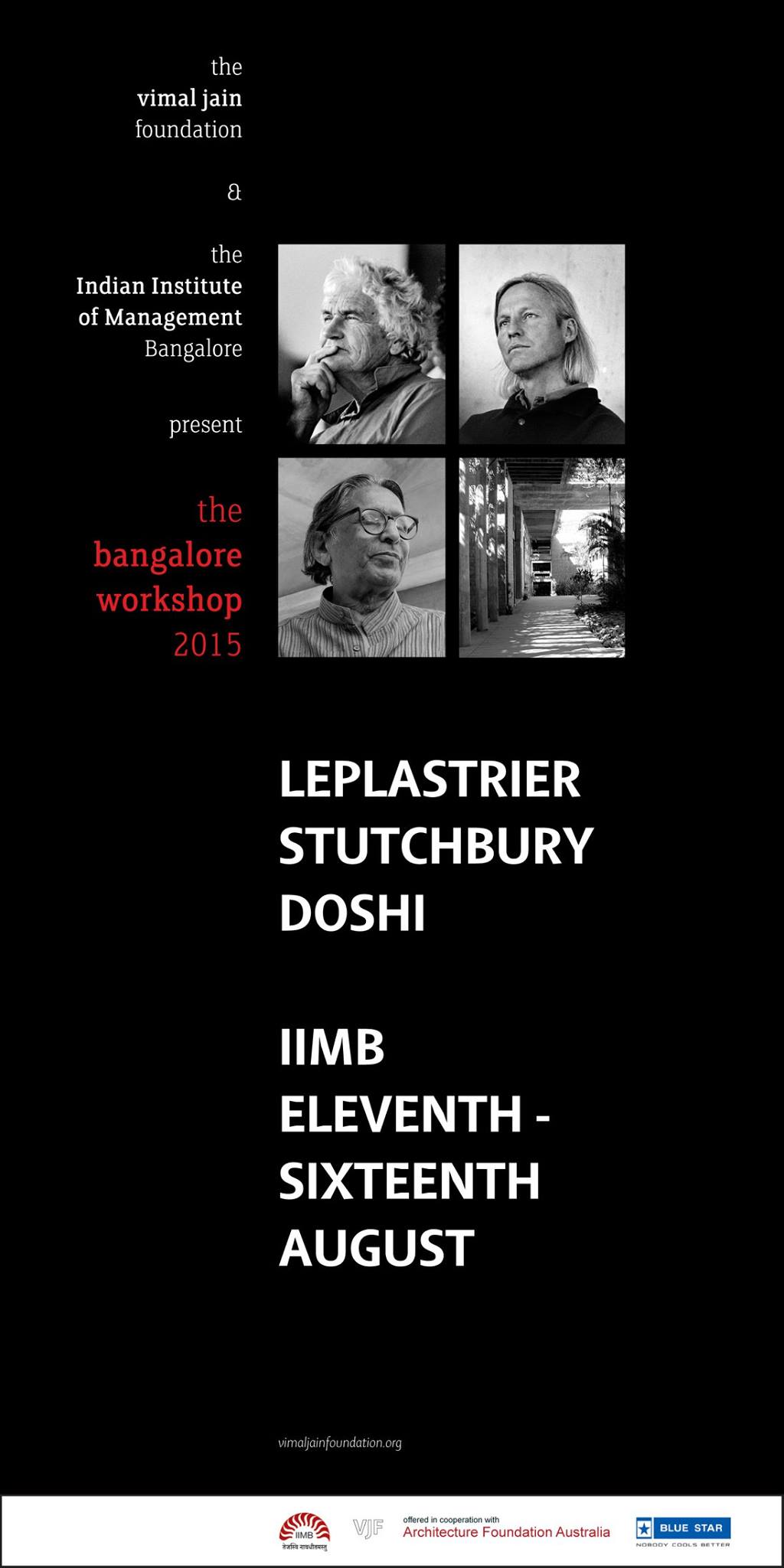The Vimal Jain Foundation and the Indian Institute of Management, Bangalore are organising a 5 day workshop from August 11th to 15th, 2015. The workshop is being conducted by Richard Leplastrier and Peter Stutchbury, both accomplished teachers, practitioners and Australian Institute of Architects Gold Medal recipients. Both of them have also been involved in the Glenn Murcutt MasterClass (http://www.ozetecture.org/masterclass/glenn-murcutt- master-class/ ) since its inception in 2000.Dr. B.V. Doshi will join the Workshop on the last two days for the final reviews and public lectures.
For the 2015 workshop, participants will be invited to study the edges of the Indian Institute of Management Bangalore and suggest ways in which to negotiate the chaotic urban environment on the street with the serene quality of the campus. The aim is to attempt a bridge both physically (through architectural and programmatic ideas) and metaphorically between these two contrasting conditions. Though known internationally as a premier academic institution, IIMB is isolated from its immediate context and offers no opportunity for a dialogue. It is the hope that through the workshop one begins to find a way to have the Institute engage with the city and vice versa. This also offers a real opportunity to address the challenges posed by rapid urbanization and commercialism – how these edges are treated will hopefully offer clues for how ‘quality’ and public space could find its way back into our streetscapes.
The workshop is open to students and practitioners. You can visit www.vimaljainfoundation.org for more details. Do spread the word and feel free to reach out to me should you have any questions.








